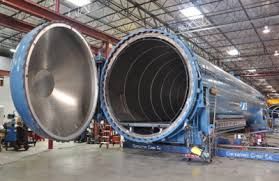Boeing has told the FAA that some of the composite structures of its Boeing 787 aircraft have been contaminated with Teflon and might not be as strong as they were intended to be. The information is contained in an internal FAA memo reviewed by the Seattle Times and is the latest in a long list of manufacturing defects being investigated and reviewed by the agency. There’s apparently no immediate safety risk for the in-service fleet but the composite issue will possibly delay the resumption of production of the aircraft. “We’re looking at the undelivered airplanes nose to tail, and we have found areas where the manufacturing does not conform to the engineering specifications,” a Boeing spokesperson told the Times. “None of these issues is an immediate safety-of-flight issue.”
The contamination occurs during the bonding process for the composite on many of the large components of the aircraft. Plastic bags are used to create a vacuum that holds the composite material in position in a mold. The part is formed under heat and pressure in a giant autoclave. The bags and the material used to allow release of the bags contained Teflon and it left a residue on the composite. That residue can weaken the bond when parts are joined together using adhesives. Initially, Boeing tests showed the bonds to be within specs but recently the company has found bonds that are weaker than designed. The Teflon contamination has been found in parts made by at least two of the contractors making big pieces of the aircraft like wings, fuselage and tail.
The Times is also reporting that the memo contains more information on the improper shimming of gaps between parts caused by waves in the composite material. The memo says more gaps have been found in passenger and cargo doors in the aft fuselage. Again, there is no immediate safety issue, but the gaps could reduce the service life of the airframes because they can lead to the fasteners that hold the skin on pulling out. That condition could affect as many as 1,000 aircraft.
The memo also reportedly says the faulty titanium fasteners identified earlier may be in as many as 450 aircraft and there is a potential safety issue there if two of the non-spec fasteners are next to each other. The most serious threat is with the fittings that connect the floor beam to the fuselage frame where the wings are attached. Two All Nippon Airways 787s in storage in the California desert had that specific defect and Boeing has fixed them, according to the Times.




































Release agent versus bonding agent.
Perfect storm.
Problem: Let’s build more than we can produce, but we want the profit, so let’s (Sub-Contract) to cheaper companies, so we can make more profits. Oh, planes crash and people die…….how many per dollar? “Insurance Companies” will fill the void.
Wording of your comment does not make logical sense.
As for out-sourcing, that can facilitate focus. People who care for facts and perspective might look up ‘Hal Korry’.
You are assuming Boeing employees always make things right. You are wrong.
An old friend used to say, “If it ain’t Boeing, I ain’t going”. Now the phrase might be, “If ya wanna be arriving, ya ain’t Boeing”.
Based on what is described in the second paragraph and my own experience working with composites, this would be an easy and quick fix if done prior to any joining operation. This sounds like someone skipping a step, to speed up production. In the end it costs more in time and loss of any confidence a customer would have in the final product.
Which paragraph exactly?
The bond contamination is from an inappropriate mold release material.
Gaps not properly shimmed may well be skipping shimming, but in this case might be from inaccurate measurement of shim thickness needed and installation workers not alerting bosses/shim calculators or being ignored or told to carry on if they did.
A general concern about the 787 is what problems have not yet been discovered.
The development process was hasty, some suppliers were jerks whose behaviour delayed everyone’s cash flow from production of parts, some not capable. (One that had performed well in the past had deteriorated under new ownership.) Coordination between managers in Boeing was not optimum, and some Boeing employees shouldn’t have been on the job.
The 787 continues to be the industry’s “carbon fiber trainer.” A gift that apparently keeps on giving.
The key question is: will the industry learn from the trainer? Undoubtedly, but the lessons will be costly.
Do new things; face new challenges. It ever has been thus.
A point that needs to be made often it seems.
So much drama with composites …
But it gets better on the 787.
To prevent galvanic corrosion between carbon fiber and aluminum fasteners, titanium was used instead. Cadmium can embrittle titanium, used in 787 fasteners, which are 15% of the airplane by weight. Hope all those tools are free of cadmium!
Might want to check on the wing lightning protection changes too. Lightning strikes cause pinholes in aluminum, but disintegrates carbon-resin layups.